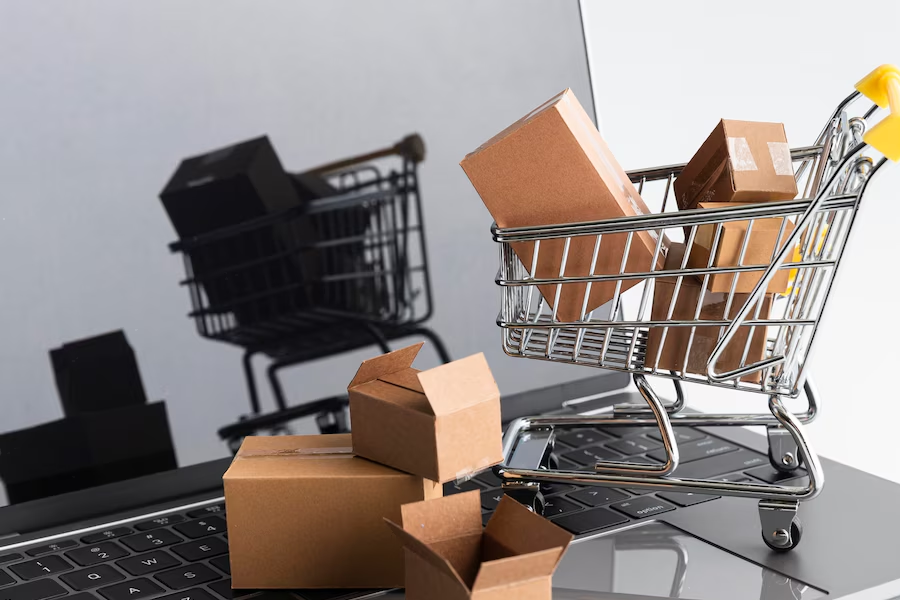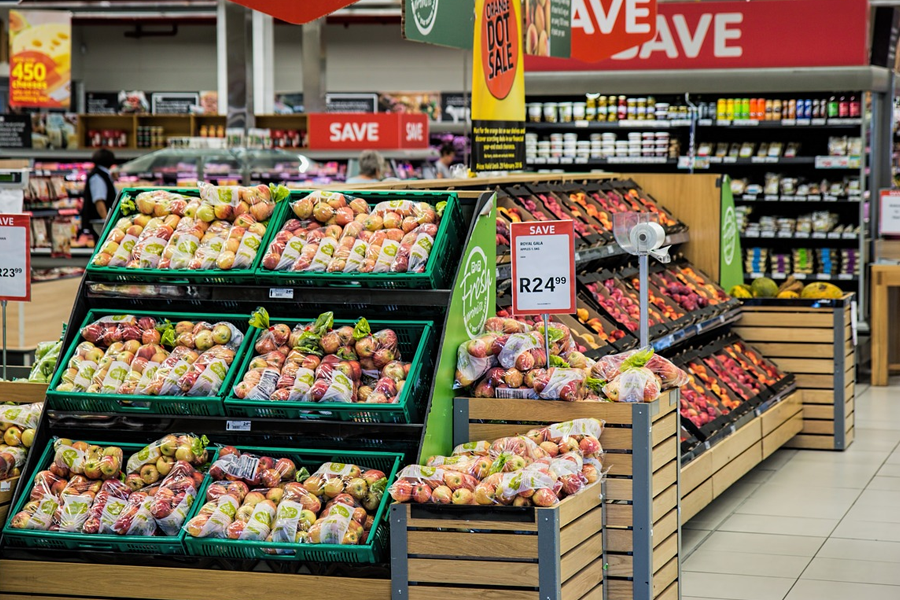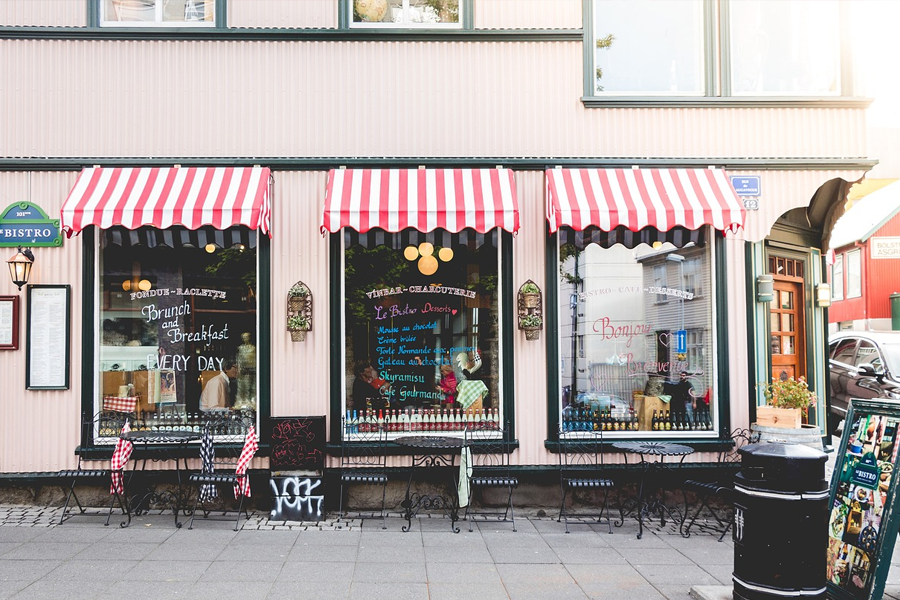
Source: Freepik
Is starting a new business in Kenya your dream? Then, you may have to decide whether you prefer to launch an ecommerce store, a physical shop, or a combination of both.
The benefits of ecommerce are apparent, as online sales are proving to be a major game changer in Kenya’s digital space. A 2020 commercial report by the International Trade Association shows that e-commerce generated 1.1 billion USD — the highest commercial digital revenue in the country for that year.
While e-commerce will continue to grow at an impressive pace in the country, physical stores still hold the lion’s share of revenue in the marketplace.
Hence, it is crucial to consider the advantages and cons of both e-commerce stores and brick-and-mortar retail shops to help you make an informed decision. This article contains all the relevant information you’ll need on this topic.

Source: Pixabay
Understanding the Difference Between E-commerce and Brick-and-Mortar Retail
Brick-and-mortar retail simply refers to a physical shop in a given location where products are sold and services delivered. The term is usually used in reference to local retail stores, grocery shops, and retail chains.
In Kenya, this traditional street side business is known as Duka. However, it can apply to any type of business that operates from a physical position, such as banks and clinics, for example.
An ecommerce store, on the other hand, refers to any business that sells its products online. As an online business, it does not require any physical location for its operations and cuts across multiple industries and sectors. E-commerce businesses have the potential to reach more people as customers can purchase anything from anywhere at their leisure.
Another relevant concept here is brick-and-click or click-and-mortar. This describes a hybrid business with both a physical storefront and an ecommerce store. A perfect example of businesses that use this model is restaurants. They have a physical location where patrons can dine and usually offer online food delivery as well.
Pros and Cons of E-commerce
Running an entirely online-based business has a number of advantages. The most obvious ones are its greater reach and scalability and lower maintenance costs. At the same time, being an entirely digital business may make getting discovered by customers a lot more challenging, especially as you’re just starting out.
For more on the specifics of ecommerce, let’s look at its pros and cons.
Pros
- Lower start-up costs: To get your shop started, you just need to build a website. Thanks to the many platforms around, pricing is quite competitive, and you can get a subscription for all the services needed to build ecommerce websites and maintain them for a much more accessible price than renting a physical store.
- Wider reach: When you do business online, your audience is essentially everyone on the Internet. Depending on your shipping options, you may be able to sell your products to customers from all over the world, not just whoever is in the vicinity of your shop.
- Access to in-depth user analytics tools: Thanks to cookies and other tools, webmasters today can get to know their site visitors quite well. You’ll learn where they’re from, how old they are, how much they typically spend shopping, what kinds of products they like, and even at what times of the day or week they are more prone to make a purchase. It’s a treasure trove of info that allows you to optimize your ads and offer a personalized shopping experience for an excellent conversion rate.
- Scalability: Websites, in general, are a lot easier to scale. All you might need to do is pay for greater storage, more server space, etc. It’s a lot easier to expand a digital business than it is to worry about relocating your store or looking for new real estate to rent.
Aside from product inventory (which applies to both ecommerce and physical shops), the costs associated with digital stores are typically lower. These businesses are also faster to set up.
Cons
- Needs active promotion: Physical stores have instant visibility to anyone in the area. On the contrary, no one will stumble on your Internet shop by accident. You have to set aside funds for SEO and other forms of digital marketing to make your business discoverable.
- You need to invest in content creation: Since prospective customers can’t see or feel your products, you have to make sure the content on your website is descriptive and persuasive enough. You’d need professional product photography, copywriters to create informative and engaging product descriptions, and so on.
- You have to keep up with digital trends: If your business is entirely online, you have to stay up to date with all digital marketing trends. Otherwise, your competition can boot you out and make it difficult for your online store to show up in relevant searches and win over new customers.
While online stores may be easier to launch, they require more research and advertising efforts to stay relevant and competitive.
Pros and Cons of Brick-and-Mortar Retail

Source: Pixabay
As we have stated above, even with the increase in the popularity of ecommerce businesses in Kenya, physical stores still enjoy the lion’s share of the market revenue. But does that mean brick-and-mortar businesses will suit every kind of company? To help you decide, we will consider the pros and cons of this form of retail marketing.
Pros
- Better shopping experience: Physical presence is important as it allows customers to feel the products they seek to buy. Many consumers prefer to examine goods in person and test them before deciding on a purchase. The advantage of the in-person shopping experience is that it mitigates the risks of shopping errors as opposed to online shops.
- Instant gratification: There is no need for customers to wait for long periods of time before getting their product. They can pick their items up immediately.
- Easier returns: There are no delays if a customer chooses to return a product. The process is also not complicated.
- Gain valuable information: There is face-to-face interaction with customers. It allows you to observe your clients closely and gain valuable information about your target market.
- Better customer experience: A closeup experience allows you to understand your customers’ complaints better and offer prompt solutions.
Cons
- More expensive to run: Brick-and-mortar retail stores require staff in different departments, which can be expensive. Another expense includes paying rent for your shop space (or buying the property altogether). This makes physical locations more expensive than online stores.
- Lower price competition: Because running a physical store can be expensive, online businesses have an advantage as they can offer lower prices for products. This is because they do not have to factor in certain overhead costs while setting prices.
- Limited location: A physical store limits your reach to a single location. Online stores can cater to a much wider audience, perhaps even internationally.
What is your business model? Considering these pros and cons in relation to the type of business you seek to operate will help you arrive at a good decision.
Convenience and Accessibility: Comparing Customer Experience
Customers may prefer online shopping due to its convenience. It affords them the chance to make purchases online from any location. Also, customers can access their favorite online store to check for products or order services at virtually any time of the day.
The same cannot be said for bricks-and-mortar retailing, as most physical stores in Kenya usually have set opening and closing times. Also, for customers to make a purchase, they have to visit the store. If they are busy or the timing is not convenient, it can hinder their shopping plans.
Furthermore, ecommerce sales require excellent product images or videos for your customers. However, this cannot compare to shopping in a physical retail shop where people can personally examine the product. To avoid disappointments, it is a good idea to feel an item, inspect its quality, and test it before making a purchase. This can boost customer satisfaction.
In that sense, ecommerce has an advantage in terms of the availability and convenience of shopping. At the same time, physical stores are a better option when clients need a sensory evaluation of what they are buying, as is the case, for instance, with food items.

Source: Pixabay
Cost Considerations: Overhead Expenses and Investment
Overhead expenses for a brick-and-mortar business can be quite high when compared with that of ecommerce stores. Fixed costs for physical stores include staff salaries, utility bills, rent for shop space, and insurance. Marketing is also usually done through traditional forms of advertisement, such as television and radio commercials, which can be expensive.
On the other hand, online retailers require minimal staff and do not need to pay certain bills. Funds are likely to be spent on web hosting and the development of mobile apps. Marketing is usually done through online channels. It is more flexible as digital advertising platforms often give advertisers the opportunity to set their own pricing and work with it.
Reach and Targeting: Comparing Audience Reach and Targeting Capabilities
E-commerce stores have the potential to reach customers in different parts of the country and the world. As a result, running an online business means you can enjoy a wider audience for your product or service.
The case is different for a brick-and-mortar store, as it has a limited reach due to its physical location. Most of your customers will come from your vicinity.
What’s more, targeting prospective customers online is much easier these days, thanks to the advancement of multiple digital marketing tools. Ecommerce businesses can optimize their traffic with SEO or omnichannel marketing and have many tools at their disposal to track ad performance.
In comparison, evaluating traffic sources for a physical storefront is more challenging. And when you don’t fully understand what brings people to your shop, it may be difficult to come up with strategies to increase foot traffic.

Source: Pixabay
Customer Interaction and Engagement: Examining the Level of Personalization
Face-to-face interaction with clients in physical stores makes it easier for business owners to properly ascertain their needs and know them on a personal level. Hence, you can offer more personalized products and services to suit their preferences. It also helps you build a proper relationship with deep customer connections.
However, these in-person interactions can often be quite surface-level. They may be based entirely on appearances. Plus, not every store owner knows all of their customers.
On the other hand, an ecommerce store may have a much deeper understanding of each user’s wants and preferences, even without in-person contact.
Thanks to various online tools for user analytics, online businesses often have a very complete picture of their client base. This, in turn, helps them automatically personalize the experience and recommendations for each client, leading to a more satisfactory shopping session overall.
In terms of raw customer data and personalization capabilities, online stores have a massive advantage over physical shops.
Branding and Trust: Building Brand Reputation and Customer Confidence

Source: Freepik
Building trust with your customers is important to grow your business. In this aspect, a physical retail presence can give you an edge as customers are more likely to trust businesses they can put a face to. Also, the availability of a fixed location gives a sense of safety and increases brand loyalty.
New electronic commerce platforms must be consistent to build trust and increase brand loyalty. They must offer dependable service and relevant branding messages. To forge a connection, you may need to spend more time maintaining a presence on social networks and engaging with customers’ comments and reviews.
Operational Flexibility and Scalability: Assessing Business Growth Potential

Source: Freepik
Brick-and-mortar sales will keep increasing as the retail industry is experiencing an expansion of physical locations. The major retailers in the country, including Quickmart, Naivas, and Carrefour, have recently opened a combined 20 new outlets.
Brick-and-mortar stores will continue to perform well in Kenya. However, e-commerce is one of the fastest-growing sectors in the country’s economy. According to Statista, e-commerce is projected to generate US$793.70m in 2024. Revenue from this market is expected to grow annually at a rate of 6.49 percent from 2024 until 2029.
As internet penetration increases and local and foreign investors invest in the market, Kenyans will continue to shop online, and e-commerce will see a significant boost. In many ways, ecommerce appears as the more future-proof way to do business in Kenya.

Source: Pixabay
Integration and Omnichannel Experience: Balancing Online and Offline Presence
Successful retailers understand that working with both systems can produce successful results as they can complement each other to suit a wide range of customers. There are several ways to operate a click-and-mortar system for your business:
- BOPIS: BOPIS refers to the “buy online, pick up in-store” trend. It is a great way to satisfy customers on the Internet without the burden of shipping costs. Also, customers entering your store may add new items to their shopping cart.
- Virtual shopping: Retailers can offer a larger product selection online. This system allows customers to purchase their product of choice even if it’s not currently in the store’s inventory.
An omnichannel experience strikes a balance as it allows customers to enjoy services across all platforms and devices. It works well for both users who prefer online shopping and physical shopping. It covers all bases and also allows you to generate more retail sales from multiple sources.
Frequently Asked Questions
How Many Brick and Mortar Shops Are in Kenya?
Based on the most recent data on the Kenyan economy, the country is home to over 250,000 retail shops.
What Is a Brick and Mortar Location?
This term describes a physical location where customers can make in-store purchases or pay for services. It simply refers to businesses clients engage with in person rather than online.
What Are the Different Types of Brick-And-Mortar Stores?
Some examples of brick-and-mortar stores include specialty stores, drugstores, and grocery stores. Any kind of company that operates a physical location counts.